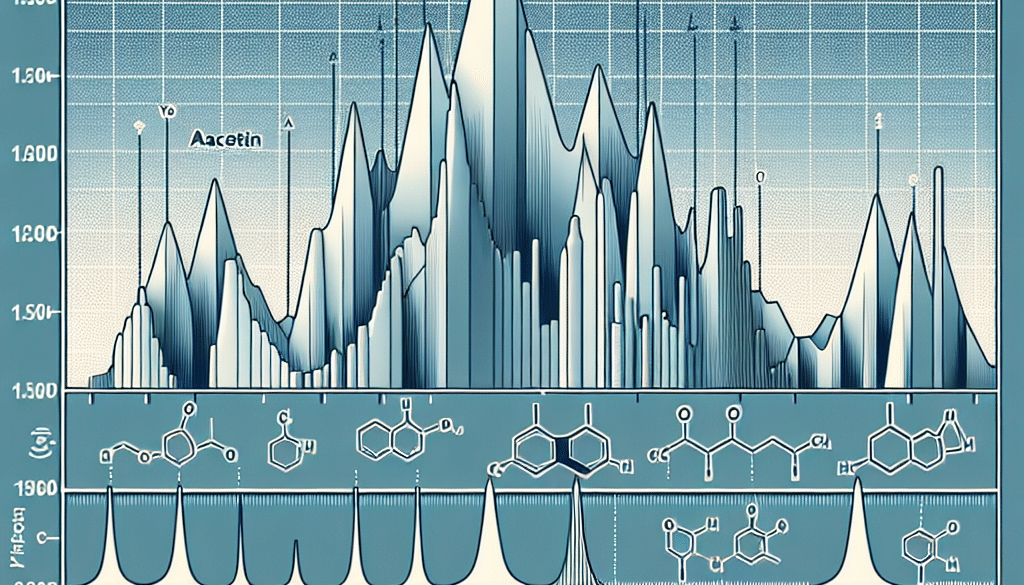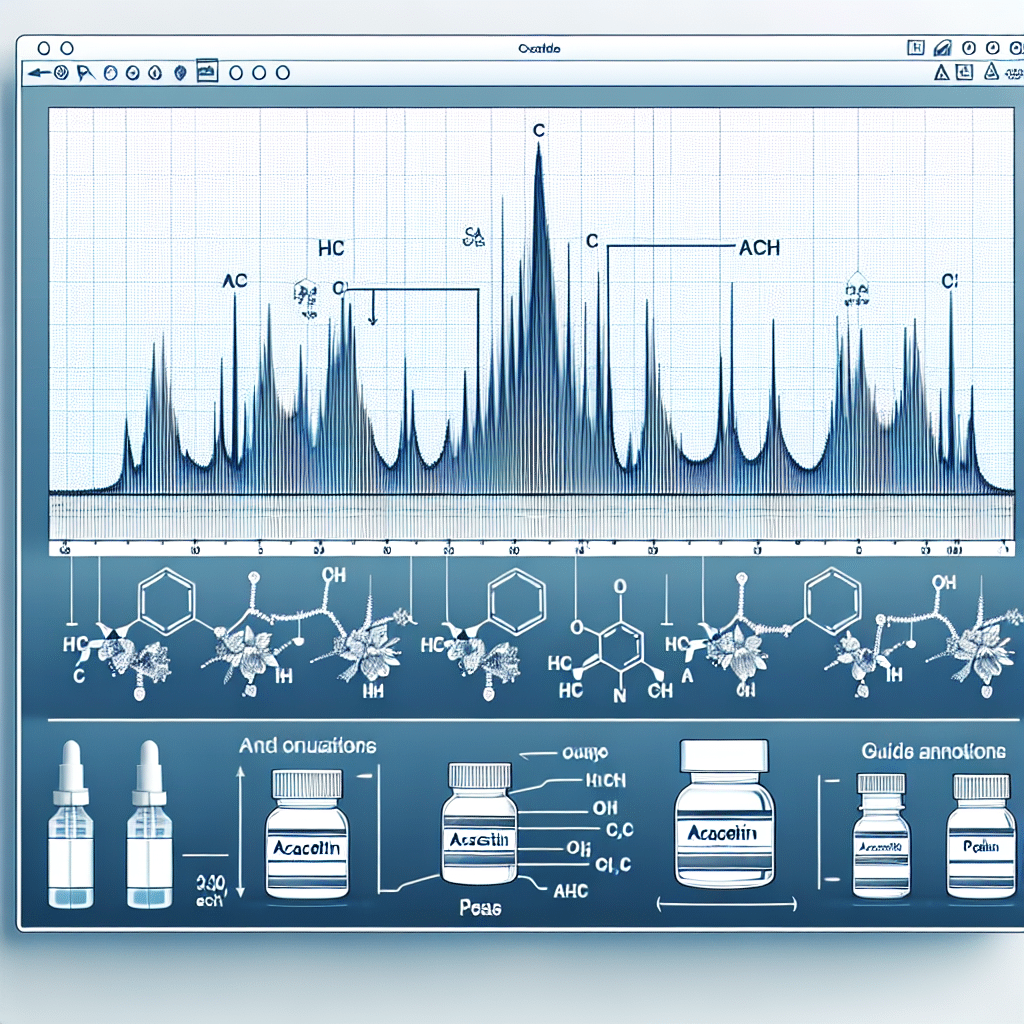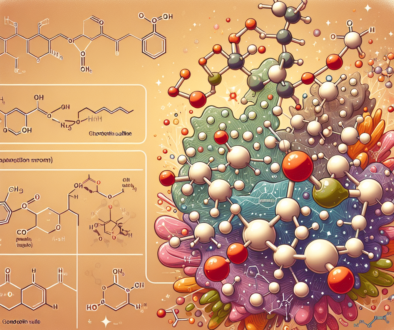HPLC Chromatogram for Acacetin Analysis Guide
-
Table of Contents
- HPLC Chromatogram Analysis Guide for Acacetin
- Understanding Acacetin and Its Importance
- Principles of HPLC for Acacetin Analysis
- Selection of Stationary and Mobile Phases
- Optimization of HPLC Parameters
- Interpreting the HPLC Chromatogram for Acacetin
- Case Studies and Examples
- Challenges and Troubleshooting in HPLC Analysis
- Conclusion: Key Takeaways for Acacetin Analysis via HPLC
- Explore ETchem’s Protein Products
HPLC Chromatogram Analysis Guide for Acacetin
High-Performance Liquid Chromatography (HPLC) is a powerful analytical technique used to separate, identify, and quantify each component in a mixture. Acacetin, a flavonoid compound found in various plants, has garnered attention for its potential health benefits, including anti-inflammatory and antioxidant properties. This article provides a comprehensive guide on utilizing HPLC for the analysis of acacetin, ensuring accurate and efficient results.
Understanding Acacetin and Its Importance
Acacetin is a naturally occurring O-methylated flavone with the chemical formula C16H12O5. It is known for its presence in the damiana plant and several other botanical sources. The compound has been studied for its various biological activities, such as anti-cancer, anti-microbial, and cardioprotective effects. Due to these properties, accurate analysis of acacetin is crucial for research and development in pharmaceuticals and nutraceuticals.
Principles of HPLC for Acacetin Analysis
HPLC operates on the principle of liquid chromatography where the sample mixture is passed through a column packed with solid adsorbent material. The components of the mixture are separated based on their interactions with the stationary phase and the mobile phase. For acacetin analysis, specific conditions and parameters must be optimized to achieve a clear and precise chromatogram.
Selection of Stationary and Mobile Phases
The choice of stationary phase (column) and mobile phase (solvent) is critical for the successful separation of acacetin. A reversed-phase C18 column is commonly used due to its non-polar characteristics, which interact well with the slightly polar structure of acacetin. The mobile phase often consists of a mixture of water and organic solvents like acetonitrile or methanol, with the addition of an acid such as formic acid to enhance peak resolution.
Optimization of HPLC Parameters
Several parameters need to be optimized for the effective HPLC analysis of acacetin:
- Flow rate: A moderate flow rate is typically employed to balance between analysis time and resolution.
- Temperature: Column temperature can affect the separation and is usually set between 25°C to 40°C.
- Detection wavelength: Acacetin absorbs UV light, and a wavelength around 340 nm is often chosen for detection.
- Injection volume: The sample size injected into the HPLC system should be optimized to prevent column overloading and ensure peak accuracy.
Interpreting the HPLC Chromatogram for Acacetin
Once the HPLC run is completed, the resulting chromatogram must be interpreted correctly. The chromatogram will display peaks corresponding to the different components of the sample. The peak of interest, which represents acacetin, should be well-resolved from other peaks with a baseline separation. The retention time, peak area, and peak height are critical parameters for quantifying acacetin in the sample.
Case Studies and Examples
Several studies have utilized HPLC to analyze acacetin in various matrices. For instance, research on acacetin extracted from the damiana plant has shown that HPLC can effectively quantify the compound in plant extracts. Another study on dietary supplements confirmed the presence and concentration of acacetin using HPLC, demonstrating the method’s applicability in quality control.
Challenges and Troubleshooting in HPLC Analysis
While HPLC is a robust analytical method, challenges can arise during acacetin analysis. These may include peak tailing, low resolution, or unexpected peaks. Troubleshooting often involves adjusting the pH of the mobile phase, changing the column type, or modifying the gradient profile. It is essential to follow method validation protocols to ensure the reliability of the HPLC analysis.
Conclusion: Key Takeaways for Acacetin Analysis via HPLC
In conclusion, HPLC is an indispensable tool for the analysis of acacetin. The key takeaways for successful HPLC chromatogram analysis include:
- Selecting appropriate stationary and mobile phases tailored to acacetin’s properties.
- Optimizing HPLC parameters to achieve clear separation and accurate quantification.
- Interpreting chromatograms with attention to peak resolution and retention times.
- Addressing challenges through methodical troubleshooting and validation.
By adhering to these guidelines, researchers and analysts can ensure precise and reliable results in their studies of acacetin and its applications.
Explore ETchem’s Protein Products
For those interested in the broader context of bioactive compounds and their analysis, ETchem’s protein products offer a range of high-quality options. Whether you’re working in the nutraceutical, pharmaceutical, or food and beverage industries, ETchem provides a variety of collagens and protein supplements that meet rigorous standards.
About ETChem:
ETChem, a reputable Chinese Collagen factory manufacturer and supplier, is renowned for producing, stocking, exporting, and delivering the highest quality collagens. They include marine collagen, fish collagen, bovine collagen, chicken collagen, type I collagen, type II collagen and type III collagen etc. Their offerings, characterized by a neutral taste, instant solubility attributes, cater to a diverse range of industries. They serve nutraceutical, pharmaceutical, cosmeceutical, veterinary, as well as food and beverage finished product distributors, traders, and manufacturers across Europe, USA, Canada, Australia, Thailand, Japan, Korea, Brazil, and Chile, among others.
ETChem specialization includes exporting and delivering tailor-made collagen powder and finished collagen nutritional supplements. Their extensive product range covers sectors like Food and Beverage, Sports Nutrition, Weight Management, Dietary Supplements, Health and Wellness Products, ensuring comprehensive solutions to meet all your protein needs.
As a trusted company by leading global food and beverage brands and Fortune 500 companies, ETChem reinforces China’s reputation in the global arena. For more information or to sample their products, please contact them and email karen(at)et-chem.com today.





